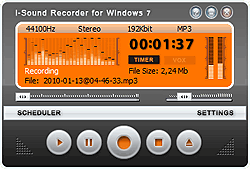Sample Resolution
In the previous section, we showed how sample rate affects the quality of digital audio. The other key determinant of audio quality is the sample resolution. This refers to how many different values the samples can take on. The higher the sample resolution, the more accurate the representation of the level of each sample, but again, the more memory required to store each sample.
In our previous paper example, we weren't really sampling digitally yet. The reason is that the value of each sample could be any value at all. In digital sampling, each sample ("dot") is represented by one of a limited number of discrete values. To illustrate how this would impact the paper example, imagine doing the same experiment using graph paper (square grid paper). Then, for each vertical line, where it intersected the sine wave, you could only draw the dot at the closest horizontal line crossing the vertical line. The number of horizontal lines represents the sampling resolution, and as you can see, fewer horizontal lines would mean less accuracy.
Digital audio is normally found in one of two resolutions:
- 8-Bit: 8-bit resolution was used in the earliest sound cards, and is used for some lower-quality recording formats as well. Here, each sample can take one of 256 different values (2^8=256). This is not generally considered enough resolution to accurately represent music audio.
- 16-Bit: This is the standard for compact disk audio and newer sound cards. Each sample can take one of 65,536 different values, more than any human can readily discern.
If these numbers look vaguely familiar, you will also find them used when discussing color bit depth for video cards (such is life in the binary world of computers?)
One more thing too: these values are all per channel. For stereo audio, which of course high quality music always is, you must have two samples for each moment in time (left and right). This doubles the sampling and memory requirements.


